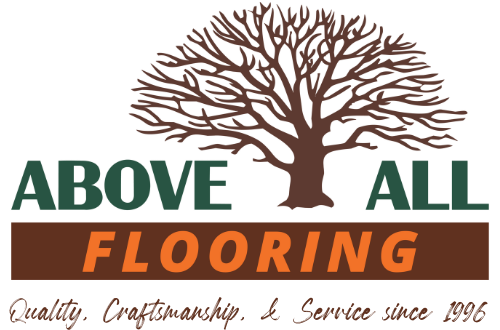Are you considering wood flooring for your home? If so, here are a few of the most common questions to consider before you purchase…
1. Which type of wood floor is right for me, solid or engineered?
That depends on where you want to install it. Both solid and engineered wood floors are made using real wood, so both are environmentally friendly.Solid wood flooring is exactly what the name implies: a solid piece of wood from top to bottom. The thickness of solid wood flooring can vary, but generally ranges from 3/4 to 5/16. Solid wood can be used in any room that is above grade (above ground). One of the many benefits of solid wood flooring is that it can be sanded and refinished many times. Solid wood floors are ideal in family/living rooms, dining rooms, bedrooms, and even kitchens and powder rooms. About the only place you can't use solid wood flooring is in the basement, but there's a solution for that area too.
Engineered wood floors are real wood floors that are manufactured using multiple layers of wood veneers. The layers that you can't see can be of the same species, or of different species. The grain of each layer runs in perpendicular directions, which makes it very dimensionally stable. This means that the wood will expand and contract less than solid wood flooring during fluctuations in humidity and temperature.
Engineered floors can be nailed or stapled to a wood subfloor, or glued down to a wood or concrete subfloor. This makes engineered wood floors ideal for slab and basement installations, but they can be used in any room above, on or below grade. While this type of flooring can be sanded and refinished, it cannot be done as many times as solid wood flooring.
2. Which wood species is right for me?
Choosing the right species of wood flooring for you is strictly a matter of your style, budget and personal preference. More than 50 domestic and imported species of wood flooring are available to achieve a unique look. Check out the species gallery.Do you like light woods like ash or maple? These species generally make a room appear more open and airy.
Do you like medium woods like hickory or oak? These species generally make a room appear more warm and cozy.
Do you like dark woods like walnut or mahogany? These species generally make a room appear more stately and refined.
Imported species can offer even more color options.
Once you decide on a look, you should consider how your floors will be used. Are you a retired couple living alone, or a busy family with young children and pets? Each wood species is rated for its hardness and durability using something called a Janka scale.
The Janka scale gives a good indication of how likely a wood is to dent or show other wear. For example, domestic black cherry is ranked at 950 on the Janka scale, while Brazilian cherry is ranked much higher at 2,820, nearly three times the hardness of the domestic species. The domestic black cherry would be a good choice for the retired couple since their floor will see less traffic, while the Brazilian cherry might be a better choice for a busy family with young children and pets.
3. Is a factory-finished floor or a site-finished floor better for me?
Each method has its own benefits and advantages, and choosing the right method will depend on the level of customization you want to achieve, and your personal preference.A job-site finish is one that applied on the job site, in the room where the flooring is being installed. With a job-site finished floor, you can choose the type of finish to be applied to your floor, which will impact maintenance, as well as the stain, if any, and sheen of the final product. In other words, a job-site finished wood floor offers you unlimited possibilities for customizing the final appearance of your floor.
However, because your floors will be sanded and finished in your home, you should expect noise, dust, and some disruption to your home. In the past few years, many dust containment systems have been developed to help control dust and debris, so be sure to ask your contractor if one can be used for your installation. You also will need to allow time for the finish to dry on-site, during which time you will not be able to walk on your floor.
With factory-finished wood floors, the finish is applied at the factory, long before it reaches your home. While many options are available with factory finished floors, you will not be able to achieve the same level of customization as you can with job-site finished wood floors.
A major benefit of factory finished floors, however, is that there is minimal dust and noise during the installation process. You also will be able to walk on your floors immediately after they are installed.








